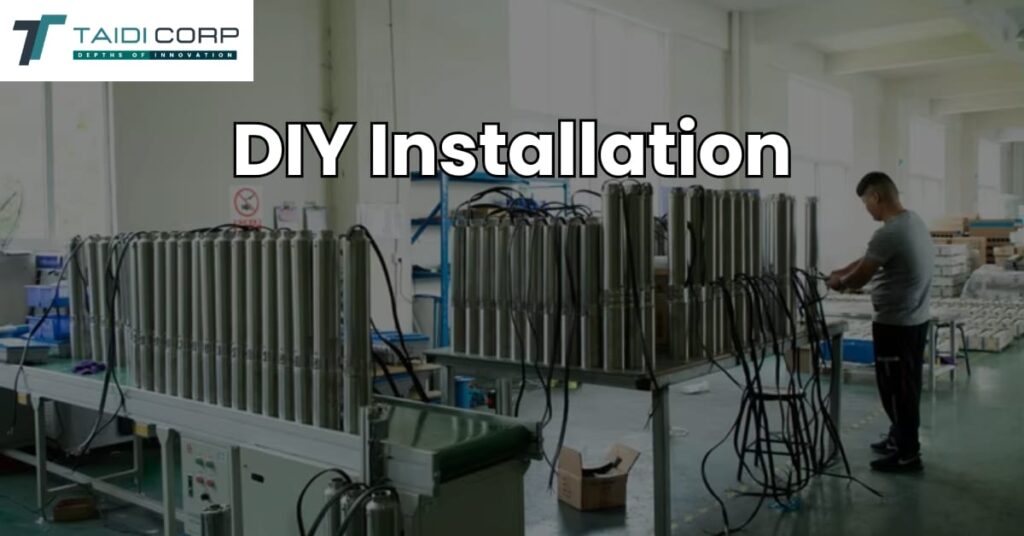
Installing a deep well submersible pump is a task that many homeowners and farmers might consider tackling themselves. The idea of saving money and having control over the installation process is appealing. However, the complexity and risks associated with deep well submersible pump installation require a critical evaluation. This guide will analyze whether DIY installation is truly a wise decision for your deep well submersible pump system.
Understanding the Complexity of Deep Well Submersible Pumps
What Makes Deep Well Submersible Pumps Different?
Deep well submersible pumps differ significantly from other types of pumps due to their unique design and functionality. Unlike shallow well pumps, a submersible pump is installed deep within the well, often hundreds of feet below the surface. The pump and motor are submerged in water, making the system less accessible for maintenance and troubleshooting. Understanding this distinction is crucial when considering a DIY approach.
Key Components:
- Submersible Pump Motor: The motor must be powerful enough to push water from deep underground to the surface.
- Submersible Pump Impeller: The impeller’s design affects the efficiency and reliability of water delivery.
- Submersible Pump Control Box: This control box manages the pump’s electrical functions and requires careful installation.
For more details on selecting the right deep well submersible pump, refer to our comprehensive guide.
Critical Challenges of DIY Installation
Technical Expertise Required
Installing a deep well submersible pump requires a level of technical expertise that goes beyond basic plumbing or electrical skills. You must understand the intricacies of the pump system, including the submersible pump control box wiring, the submersible pump motor setup, and the correct positioning of the submersible pump in the well. Any mistakes during installation could result in inefficient operation, system damage, or even dangerous electrical issues.
Specialized Equipment
DIY installation requires access to specialized equipment. You need lifting devices to lower the pump into the well, torque arrestors to prevent damage from motor startup, and precise measuring tools to ensure the correct depth placement. Many homeowners and farmers may not have these tools readily available, making the DIY route more complicated and costly than anticipated.
Risk of Improper Installation
Improper installation of a deep well submersible pump can lead to a host of issues. For example, if the submersible pump is not placed at the correct depth, it could fail to access sufficient water, leading to low water pressure or pump burnout. Additionally, incorrect wiring of the submersible pump motor or control box could cause electrical hazards, potentially resulting in pump failure or property damage.
For those considering the DIY route, it’s crucial to review our detailed step-by-step guide to understand the full scope of the task.
Potential Long-Term Consequences
Maintenance and Repairs
One often overlooked aspect of DIY installation is the long-term maintenance and repair of the system. A professionally installed pump is more likely to operate efficiently and with fewer issues over time. In contrast, a DIY installation might lead to frequent repairs, especially if the pump was not installed correctly. This can result in higher long-term costs and more significant downtime for your water system.
Impact on Water Quality and Efficiency
Improper installation can also affect the overall efficiency of your deep well water system. For instance, a misaligned submersible pump impeller can reduce the system’s water output, impacting both residential and agricultural water needs. Additionally, incorrect installation might exacerbate issues with hard water, leading to faster wear and tear on your pump system. To better understand how submersible pumps handle hard water, refer to our comprehensive guide.
Is Professional Installation a Better Option?
Given the technical challenges, specialized equipment, and potential long-term consequences, professional installation is often a wiser choice for deep well submersible pumps. Experienced installers are equipped to handle the complexities of the job, ensuring that your pump operates efficiently and reliably for years to come. Additionally, professional installation can provide peace of mind, knowing that your deep well water system is set up correctly from the start.
Conclusion
While the idea of saving money with a DIY installation of a deep well submersible pump might be tempting, the risks and challenges associated with the process make it a questionable choice for most homeowners and farmers. The complexity of the installation, the need for specialized equipment, and the potential for long-term issues all point to the wisdom of opting for professional installation. If you’re determined to proceed with a DIY approach, make sure to educate yourself thoroughly and consider the long-term implications carefully.
For more guidance on choosing the right deep well pump to maximize efficiency, ensure sustainability, and improve water quality, visit our in-depth guide.
